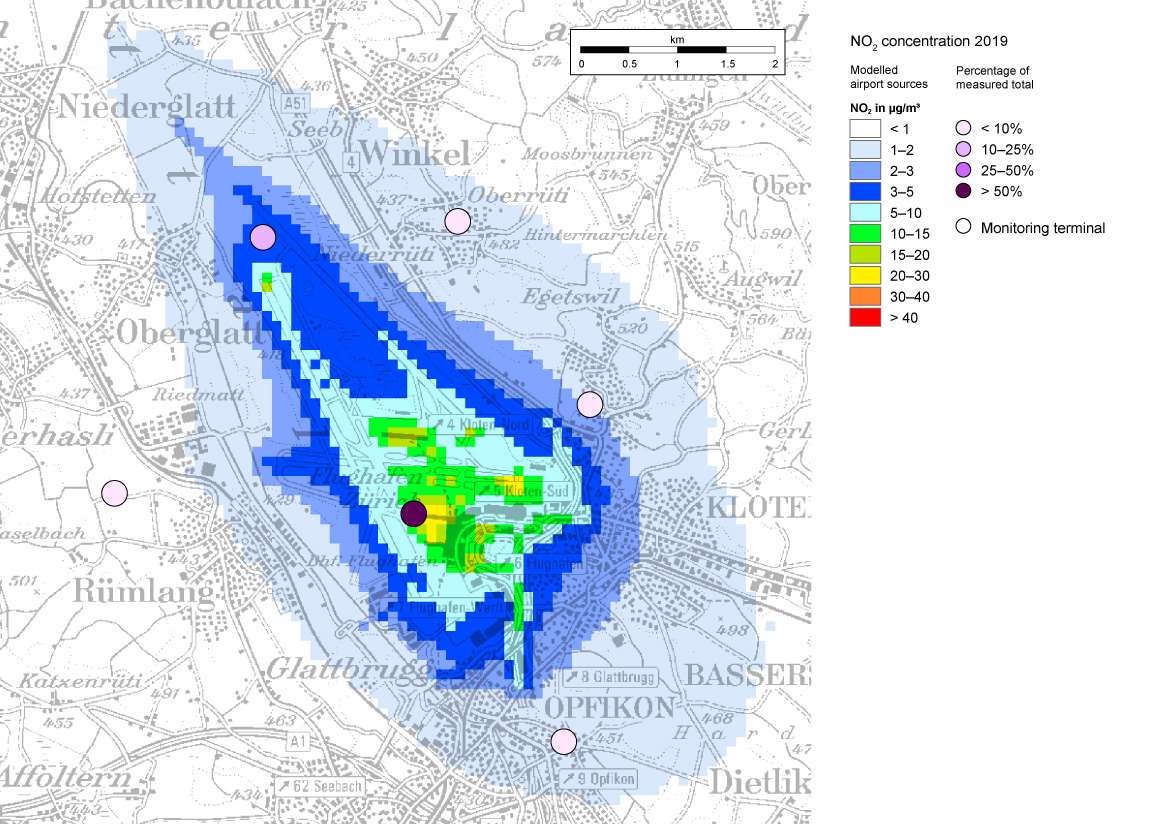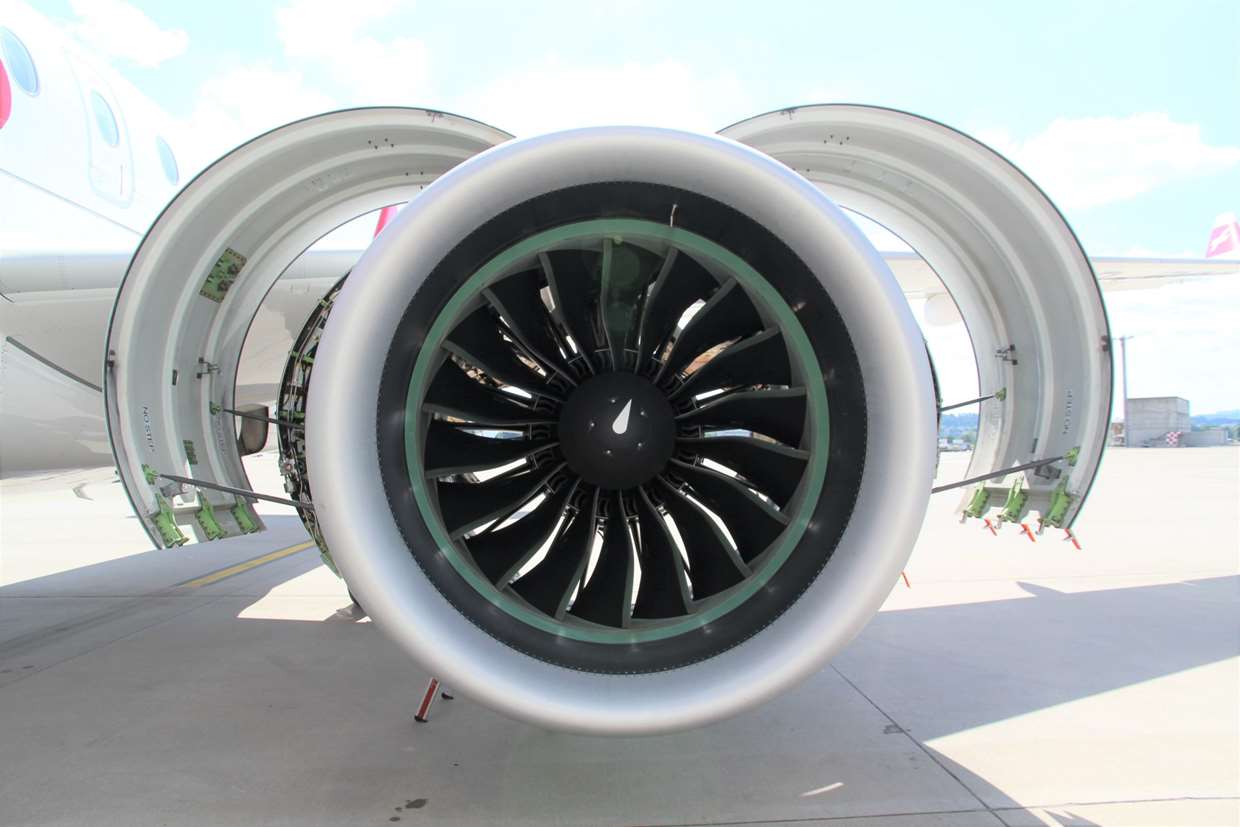Air quality
Zurich Airportʼs operations produce some emissions that affect air quality. However, the impact of these is essentially local.
EMISSIONS
Various pollutants are monitored in order to assess the air quality at Zurich Airport. The most important of these are nitrogen oxide (NOX) and particulate matter (PM). Flughafen Zürich AG maintains an emissions inventory which records how much of each individual pollutant is emitted annually. Zurich Airport complies with the applicable official nitrogen oxide emission limits.
At Zurich Airport, air pollutants arise from the following four source categories: aircraft, handling operations, the airportʼs infrastructure and landside traffic. Air pollutants are primarily produced by the combustion of fossil fuels such as kerosene, diesel or petrol, so aircraft account for the majority of emissions and around 90% of nitrogen oxides.
Pollution
Once discharged into the atmosphere, emissions do not remain in the same state – their composition changes, and they are diluted and dispersed before actively becoming pollutants. These pollutants are measured at certain points and are also modelled over the area as a whole.

Automatic monitoring station on the roof of Dock A.
This mathematical modelling is based on the emissions inventory and additional information about the time and location of emissions. Combined with meteorological data, it is then possible to calculate the distribution of the pollutants using special software.
A network of monitoring equipment which measures actual concentrations has been set up across the airport and the surrounding region. Both fully automatic monitoring stations as well as passive collectors that measure the amount of the indicator pollutant nitrogen dioxide in the air are used. The automatic monitoring stations are operated on behalf of the airport by the Office of Waste, Water, Energy and Air (AWEL) of the Canton of Zurich.
Flughafen Zürich AG regularly conducts additional studies on individual pollutants and issues in order to gain a better understanding of the situation. For example, a study on ultra-fine particulates on the approach path to runway 14, the main landing runway, was carried out during the reporting year.
Situation in 2019
The reduction in the number of flight movements led to a 3.3% drop in the emission of nitrogen oxides (NOX) at the airport during the reporting period.
Measured pollutant values at and around the airport were on a par with the previous yearʼs level. Although the limits were exceeded on the apron and along the main roads in the region at certain times, levels of pollution from the airport fall rapidly, the further away one gets from the airport. Outside its perimeter, emissions from the airport account for a maximum of 10% of the total air pollution measured there.

Impact of the airport on local air quality.
MEASURES TO REDUCE POLLUTANT EMISSIONS
Flughafen Zürich AG has already taken a number of steps to help reduce air pollutant emissions. It has levied emission-based landing charges since 1997: the more pollutants an engine emits, the higher the charge. Flughafen Zürich AG is also investing heavily in optimising its operational processes in order to streamline aircraft movements and consequently cut down the amount of time engines are running.
Another important measure is the provision of fixed ground power systems. Thanks to these, on-board auxiliary power units for electricity and air conditioning can remain switched off while more energy-efficient sources are used instead.
The use of ground vehicles powered by electric motors rather than internal combustion engines is a further measure to help avoid emissions. The number of electric-powered vehicles and equipment used for aircraft servicing and ground handling at Zurich Airport is steadily rising.

The design of the engines (here one of the Airbus A220) plays a decisive role in the composition of the pollutants.
International cooperation
Internationally, Flughafen Zürich AG is among the worldʼs leading pioneers in matters of air quality. It offers its expertise in various international organisations and technical bodies, sharing know-how and new ideas with other airports around the world. It is also involved in the further development of models, regulations and technology.

